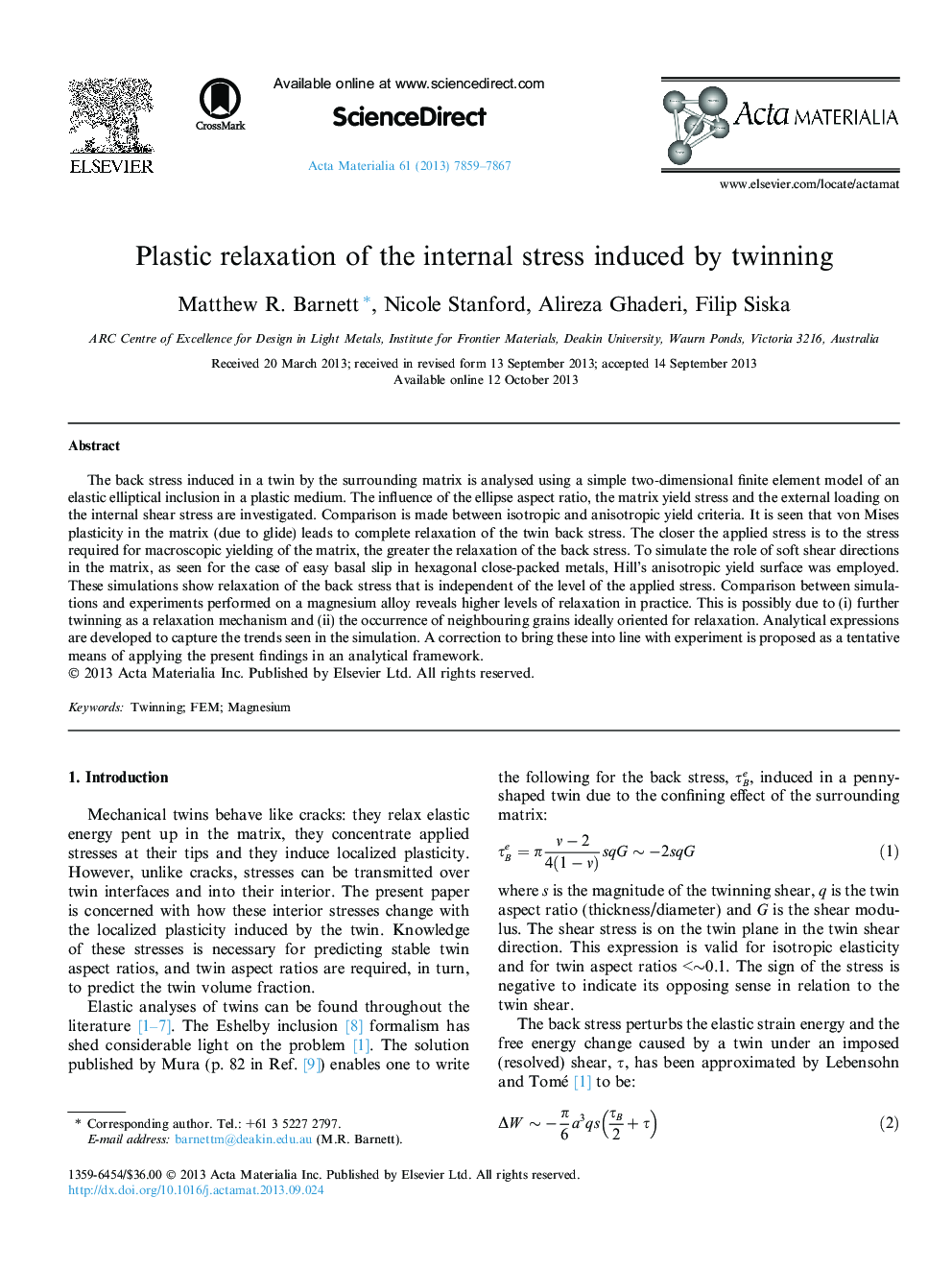| Article ID | Journal | Published Year | Pages | File Type |
|---|---|---|---|---|
| 1446205 | Acta Materialia | 2013 | 9 Pages |
The back stress induced in a twin by the surrounding matrix is analysed using a simple two-dimensional finite element model of an elastic elliptical inclusion in a plastic medium. The influence of the ellipse aspect ratio, the matrix yield stress and the external loading on the internal shear stress are investigated. Comparison is made between isotropic and anisotropic yield criteria. It is seen that von Mises plasticity in the matrix (due to glide) leads to complete relaxation of the twin back stress. The closer the applied stress is to the stress required for macroscopic yielding of the matrix, the greater the relaxation of the back stress. To simulate the role of soft shear directions in the matrix, as seen for the case of easy basal slip in hexagonal close-packed metals, Hill’s anisotropic yield surface was employed. These simulations show relaxation of the back stress that is independent of the level of the applied stress. Comparison between simulations and experiments performed on a magnesium alloy reveals higher levels of relaxation in practice. This is possibly due to (i) further twinning as a relaxation mechanism and (ii) the occurrence of neighbouring grains ideally oriented for relaxation. Analytical expressions are developed to capture the trends seen in the simulation. A correction to bring these into line with experiment is proposed as a tentative means of applying the present findings in an analytical framework.
